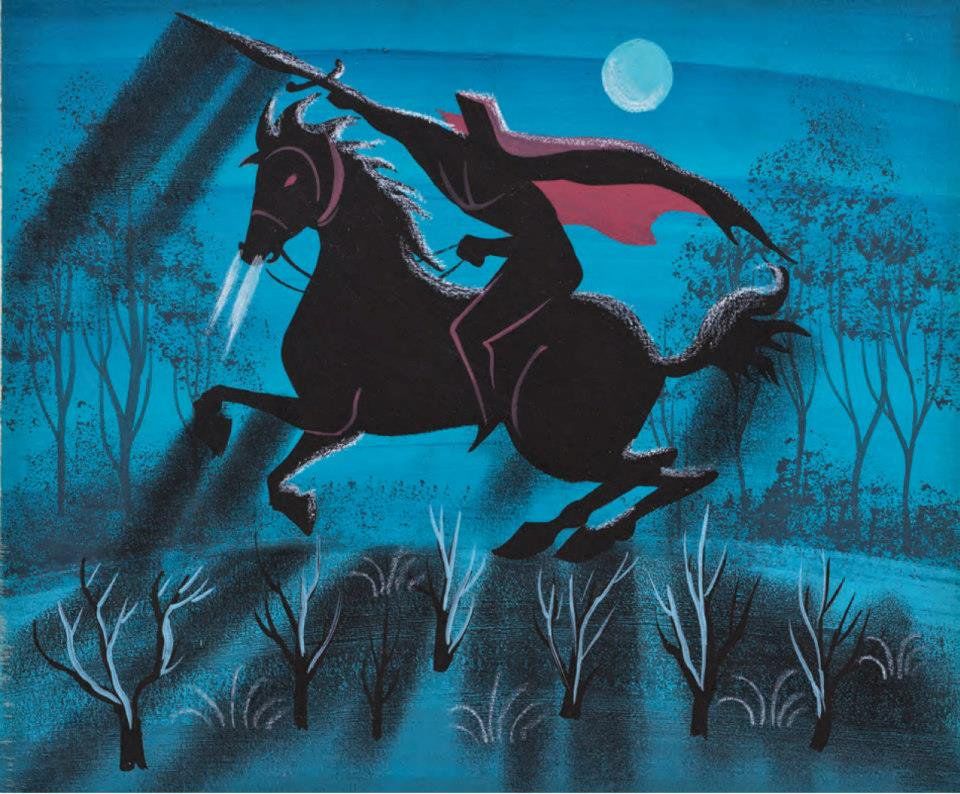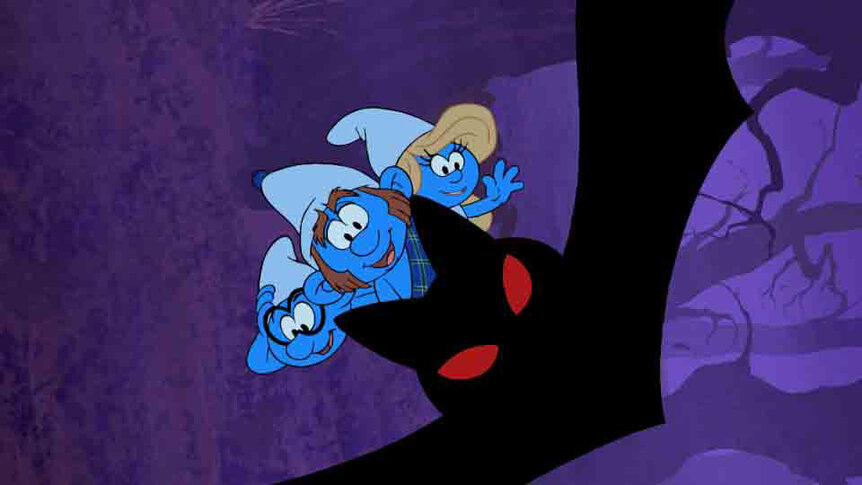Create a free profile to get unlimited access to exclusive videos, sweepstakes, and more!
The many adaptations of The Legend of Sleepy Hollow

In the 170-ish years since its original publication, "The Legend of Sleepy Hollow" has carved out a specific corner for itself in the classic horror canon. This is a tale that is rooted soundly in its era yet has managed to change to suit new audiences many times over. Its initial commentary on the nature of myths that spring out of historical events may not always have remained intact, but even that is a commentary on the nature of fables.
Indeed, the Headless Horseman was not the sudden, clever invention of author Washington Irving. The myths of such beings had been touchstones of folklore through Europe for quite some time. Yet Irving did give us the condensed, memorable tale of the cowardly Ichabod Crane, whose superstitions come to life on a dark and stormy night, and for most, this is the Headless Horseman tale that defines the trope. Still, there are lots of other takes on this legend, and some of them are, let's face it ... pretty darn weird.
The Original
Though "The Legend of Sleepy Hollow" was released in 1849 as part of Irving's The Sketch Book, it is based in 1790. The Revolutionary War still hung palpably in the air for much of New England, and this tale of a mysterious Hessian soldier who lost his head was based on local folklore of the time. Though these elements of the story are mostly background details in subsequent adaptations, the original tale went to some length to establish the post-war atmosphere that permeated the town.
The story itself follows Ichabod Crane, a schoolmaster who sought to propose to a woman named Katrina in hopes of securing a better fortune for himself. His competition was a local jerk suitably named Abraham Van Brunt, who pranked the superstitious Crane to no end. Crane proposed to Katrina, but she declined, so he took to the woods for a late walk home. Yet Crane was never to make it to his home, as he encountered the ghoulish Headless Horseman (possibly Van Brunt in disguise) along his way.
An important element of the original Legend of Sleepy Hollow is that it is an observance of the nature of folklore and fables in and of itself. The story is parlayed by those who claim to barely believe the story. Walking through the woods, Crane ponders the hauntings and the history of his surroundings. Ichabod's superstition seems to take on a life of its own when he finally lays eyes upon the Horseman, who represents a tangible memory of the horrors of the Revolutionary War.
Early Takes & Jeff ... Goldblum?
There were actually three different silent film adaptations of this story, but the only one to survive is the bizarrely slow-paced Legend of Sleepy Hollow (1922). This film has some interesting historical notes behind it, such as being the first panchromatic feature film, but it's a strange one. The bombastic Will Rogers plays a sinister and cruel Ichabod Crane, antithetical to both the original tale and Rogers' affable star persona. The experimental shooting methods show a lot of kinks, but the superimposed shots of a ghostly Horseman were indeed groundbreaking for their time.
For a lot of people, their introduction to the tale was likely the Disney version, which was initially released as a companion to the Mr. Toad cartoon. This retelling mostly removed the historical effect, instead emphasizing Ichabod's paranoia and superstition. He sees monsters and goblins in the woods rather than specters of historical war heroes. More tuned toward a young audience, the general tone of the original short story is replaced with a mix of comedy and horror.
In 1980, a TV version of the story starring Jeff Goldblum in the role of Ichabod Crane hit the air. This take on the legend replaced Ichabod's nervousness and superstitious inclinations with good old '80s-style skepticism. The story also leans more heavily on being a love story, and Ichabod does indeed end up with Katrina in the end. In 1985, an episode of Shelley Duvall's Tall Tales and Legends focused on a retelling of the original story, with Ed Begley Jr. as Crane and Beverly D'Angelo as Katrina.
There have been several takes on the legend for children's television, including episodes of Are You Afraid of the Dark?, Wishbone, and, yes, even the Smurfs in the classic "Legend of Smurfy Hollow."
Sleepy Hollow
Of course, most people who lived through the late '90s will immediately associate the Legend of Sleepy Hollow with the 1999 Tim Burton film Sleepy Hollow. This one definitely took some liberties, but, for a lot of film fans, this is the definitive version of the tale. The essential element of a lanky, bumbling Crane faded to dust in the Burton adaptation, with Johnny Depp bafflingly cast in the role. The film introduced a plotline in which Crane is an edgy, wounded, psychic, opium-addicted detective, possibly in some part because no one would buy Depp as an awkward, well-meaning nerd.
One upswing of the 1999 adaptation is to include more characterization for Katrina, who appears quite literally as a bartering chip in the original story as well as most other adaptations. Though her refusal of Crane's proposal is a key plot element in the story, she is given no context and appears only as the object of affection, lust, or even just plain old greed of the male characters. In Sleepy Hollow, Christina Ricci at least has the chance to breathe a little extra life into the character, as she becomes more intensely intertwined with the legend itself.
"The Legend of Sleepy Hollow" has seen some surprising twists and turns since its release, and there are no doubt more adaptations waiting in the wings. Regardless of what your favorite take is, there is no arguing the fact that this timeless look at the nature of storytelling disguised as a horror story will continue to breathe new life through new audiences for years to come.






























